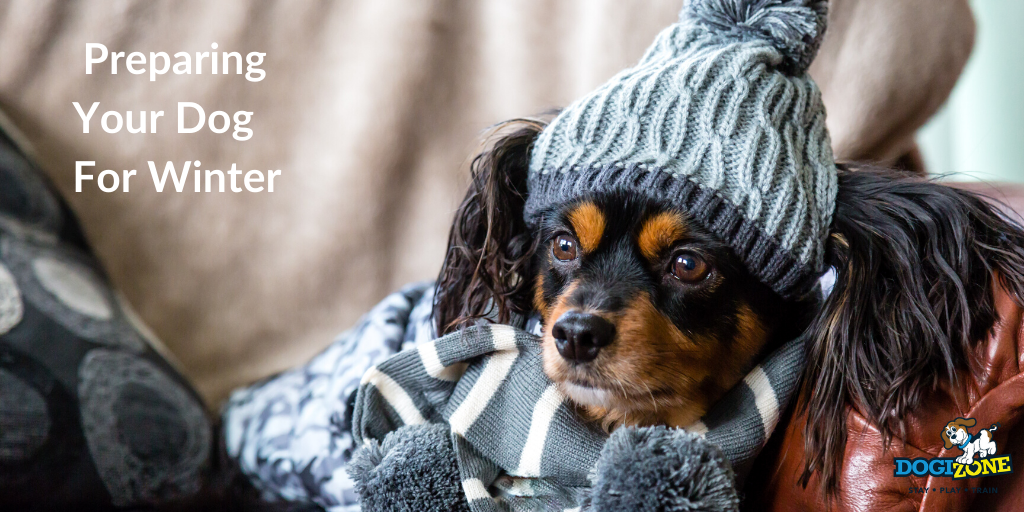Preparing Your Dog For Winter
Preparing your dog for winter weather can be a tough task for dog owners. Most dogs are very comfortable spending short amounts of time outdoors, even in the winter. However, it is an essential part of responsible pet ownership to make sure dogs are not expected to stay outside in temperature or in weather conditions that are dangerous or even potentially life-threatening. 
With short-haired dogs, older dogs, puppies, or dogs with health issues, limiting time outdoors in the winter is important for their health and well-being. Try to time trips outside for walks and exercise to the warmest part of the day, or perhaps check into a doggy day care or an indoor dog park area in your city if your dog is particularly cold sensitive.
Get Out the Winter Clothes
Dogs that have short coats or fine, single coats can enjoy time outside with a doggy hoodie, jacket, sweater, or even a winterized water and snow proof vest. Most dogs adjust quickly to wearing these items, particularly when they are paired with going out for a walk or spending time outdoors.
Practice having the dog wear the items for a short period of time, and give them lots of praise and remove the sweater or jacket. Over time, add to the amount of time he or she is wearing the item based on their ability to adjust. For long walks outside on icy or snowy sidewalks, consider a pair of doggy booties to protect the pads of the feet and prevent painful ice build-up in the pads.
Always make sure the clothing fits properly and is not tight or restrictive. It should also not be too loose as this may cause tripping and accidents.
Know the Signs of Hypothermia
Spending too much time in the cold in the winter can cause dogs and people to develop hypothermia. This is a life-threatening condition that occurs with the dog’s body temperature drops below normal. The first signs of hypothermia are shivering and shaking, followed by fatigue, lethargy, and muscle weakness. The ears and feet will feel very cold to the touch.
If the dog is not warmed up, the heart rate will drop, and breathing will slow, eventually resulting in death. If the dog shows any signs of changes in behavior, immediately take them indoors and allow them to spend time until their body temperature is back to normal.
Make it Warm and Cozy
Your dog will love to snuggle in warm bedding in the winter, even inside the house. This is particularly important for senior dogs or dogs with health issues, as even a slight drop in temperature on the floor can result in the dog feeling stiff and uncomfortable.
Be sure to keep dog bedding away from space heaters, baseboard heaters, and away from the fireplace. It is also a good idea to keep the bedding away from entrances, where drafts from the doors can create cooler temperatures for the dog.
Finally, be sure to provide lots of fresh water for your dog over the winter. The dry air in the house and the drier air outside can create a risk of dehydration. Remember, if the dog is kept outdoors in a warm kennel area, make sure the dog has access to water that doesn’t freeze.

